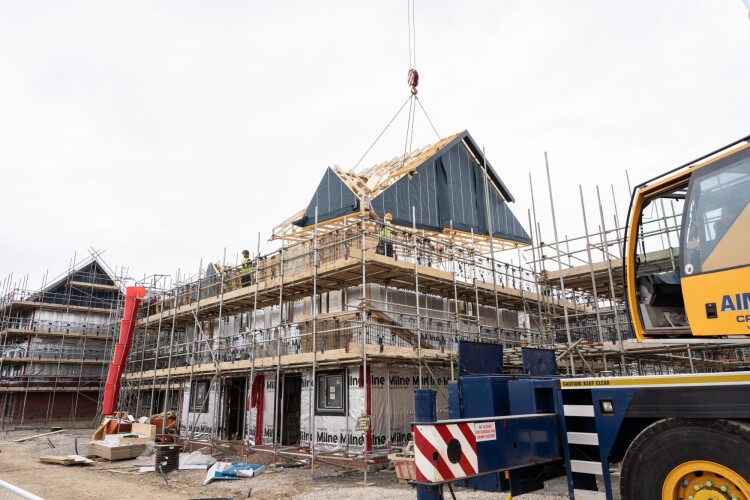The new report, Whole Life Carbon Assessment of Homes, concludes that using sustainably sourced timber panelised modern methods of construction (MMC) rather than masonry products in building new homes can reduce carbon impact.
On a whole life carbon basis, the study predicts that up to 5t CO2e per 4-bed dwelling, equivalent to 16,500 road miles, could be saved when using timber panelised MMC methods.
AIMCH is a £6.5m collaborative R&D project that aims to promote and develop industrialised off-site modern construction methods to build homes quickly and viably. Participating partners are Stewart Milne Group, Barratt Developments, L&Q, the Manufacturing Technology Centre (MTC), the Construction Scotland Innovation Centre (CSIC) and Forster Roofing Services.
Stewart Dalgarno, AIMCH project director and director of innovation and sustainability at Stewart Milne Group, said: “The comprehensiveness of this report provides valuable insights into where developers, house builders and the supply chain can make a positive contribution to reducing the whole and embodied carbon contributions of new build homes.
“AIMCH commissioned the report to understand the differences in whole life carbon emissions over 60 years, to current building regulation standards, between open and closed panel timber MMC systems and aerated concrete blockwork used in masonry construction. All processes relevant to the construction cycle, in line with the RICS [Royal Institution of Chartered Surveyors] model have been considered — materials, manufacture, transport, usage through to the end-of life and disposal stages. The resulting comprehensive analysis provides invaluable data to inform house builders on the carbon intensity of the two construction methods.”
Using the RICS Standard for Whole Life Carbon Assessment, the report represents a cradle-to-grave assessment of the carbon impact of both types of construction materials and their respective methodologies. If found that 82% of emissions are generated from the operational use of the homes over 60 years, which is the same for both methods. 14% of emissions are generated from the materials and construction process. A small proportion of emissions are generated at end of life.

The study, authored by green energy consultancy Verco, examined four types of home.
Areas investigated included:
- Production stage – raw materials, manufacture, transport
- Construction stage – energy, transport, waste disposal during construction
- In use stage – use emissions, maintenance, repair, replacement, refurbishment, operational energy use
- End-of-life – demolition, transport, waste processing, disposal
Carbon sequestration benefits of timber, in line with RICS protocols, were applied to all methods of construction, for example benefiting masonry homes bult with timber floors and roofs. End of life assumptions used identical 90% recycle/reuse and 10% to landfill ratio across both material types.
Cementitious products including roof tiles, concrete blocks, brick cladding, strip foundations and floor slabs, were found generally to have the highest lifecycle embodied emissions. Conversely, timber frame wall elements sent to landfill, were found to produce 0.5 tCO2e emissions at end of life, compared to aerated concrete blocks.
Panelised timber MMC construction methods outperformed masonry construction on a whole-life carbon basis, when comparing the direct substitution of various wall elements – external, load bearing and party wall elements. Embodied emissions of these wall elements being as much as 82% less than that of the masonry construction. In addition, timber MMC key properties contributing to reduced emissions include:
- Lower embodied emissions of materials
- Lower emissions from transport to site
- Less energy and time spent on site
- Benefits of carbon sequestration during the life of the building
Further research is being conducted, assessing the impact from new building regulations coming into force in June 2022 and the Future Homes Standard.
Got a story? Email news@theconstructionindex.co.uk



